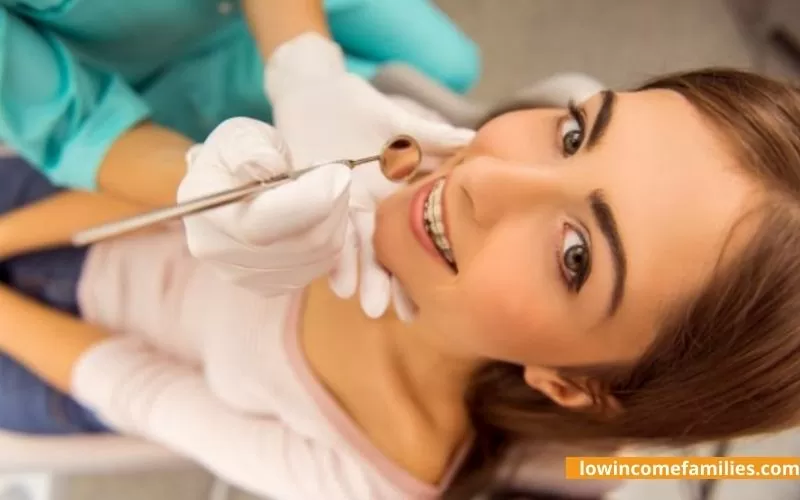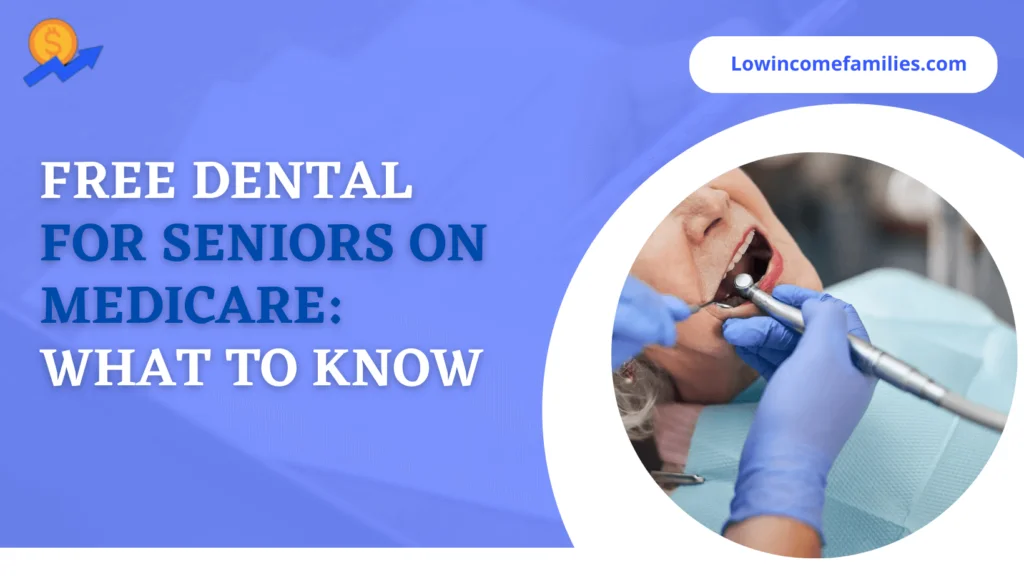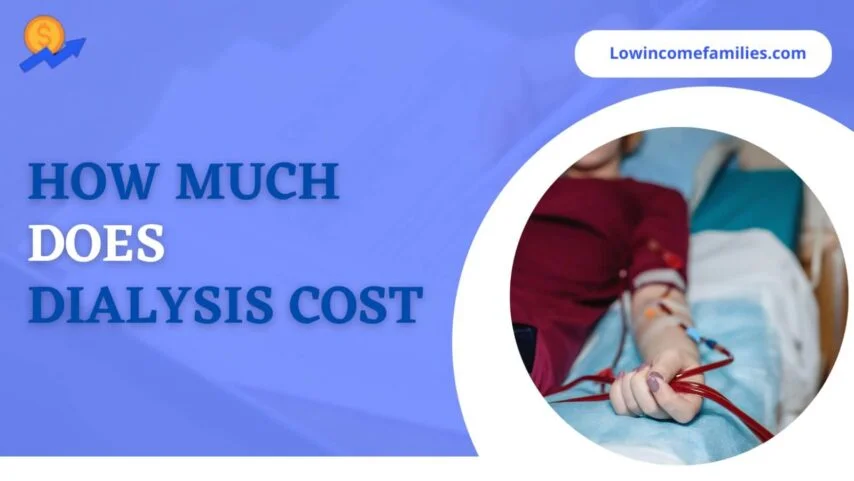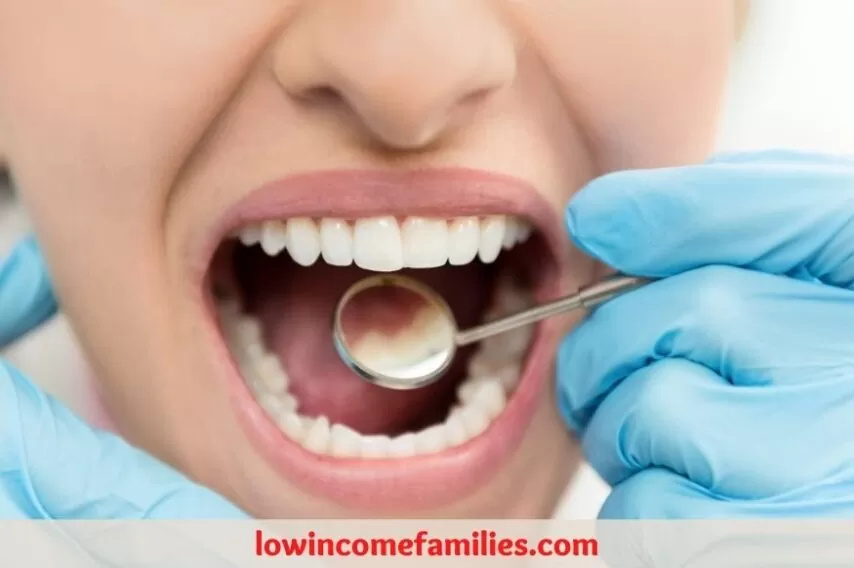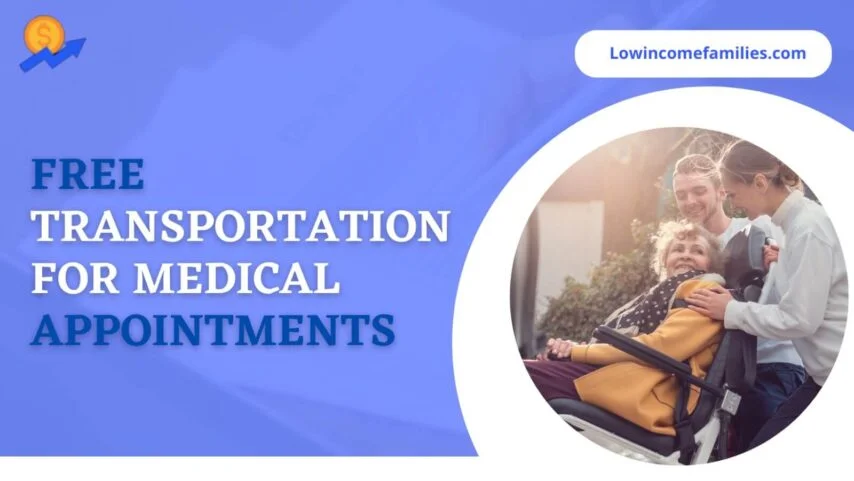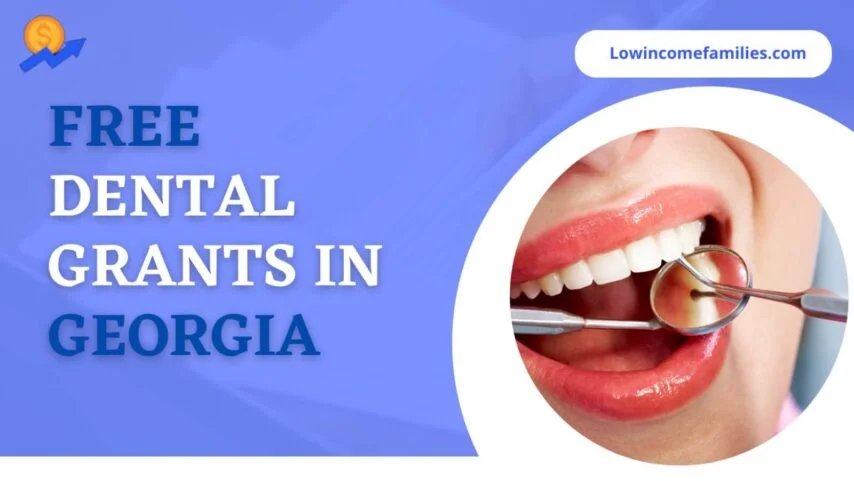We have discussed here all about Orthodontist That Accepts Medicaid For Braces. Around four million Americans have orthodontic treatment to enhance their beautiful smile. There are many more from a drop down menu of dentists service and correct the misalignment of their teeth. Patients’ most prevalent dental complaints, second only to tooth decay, are bite issues. Except orthodontist that accept Medicaid, the recommended service for such issues, can be costly if not covered, especially for those who cannot afford even basic dental care or a beautiful smile.
The Medicaid program is supported by the federal government and is co-financed by the states. Medicaid is funded to the tune of 60% by the federal government. The remaining 40% of the price is paid with public assistance. Medicaid covers all medically necessary services for anyone earning less than 133 percent of the (FPL) (federal poverty level) and pregnant women earning less than 185 percent of the FPL.
Because orthodontics is considered a cosmetic procedure, the federal government does not pay for dental services, including orthodontics. Dental services, on the other hand, are occasionally reimbursed by Medicaid if they are medically required. Children with a cleft palate, for example, may be eligible for orthodontic treatment through Medicaid.
In order to receive federal financial assistance, state Medicaid programs must meet specific treatment options and requirements. States must enact regulations that cover medically necessary treatments and methods specially for children while also limiting the number of benefits paid for medical services and procedures.
Read Also:
Does Medicaid cover dental implants
I need dental work but have no money
Why Does Medicaid Refuse to Pay for Orthodontic Dental Services Treatment?
Unless the treatment is medically essential or even for low income families, most insurance plans do not cover orthodontic therapy. It’s also possible that the quantity provider varies by state for low income families.
Consult your child’s orthodontist first to determine clinical necessity with the smile providers. An orthodontist is the best person to determine if your child’s teeth misalignment and bite difficulties are affecting not only his or her dental health, but also his or her physical and emotional well-being. If they do, Medicaid will cover a large percentage of the orthodontic treatment costs.
Free Handicapped Transportation Service For People With Disabilities
When Is It Time to See an Orthodontist For Dental Health?
An orthodontist is a dentist who specializes in the use of dental appliances to realign the teeth contact for braces medicaid. If your child has a chewing issue that makes it difficult for him or her to communicate or chew, you should seek the help of an orthodontist for braces medicaid contact. It should ideally be someone who is not only nearby but also accepts Medicaid.
Is There A Difference Between a General Dentist and an Orthodontist?
Who should you counsel about your child’s bite problems? Is it truly necessary to see an orthodontist, or would a general dentist suffice? It is recommended that you seek the opinion of an orthodontist to address your question.
Orthodontists are specialists who have spent several years studying and analyzing after graduating from dentistry school. The orthodontic residency lasts two to three years and focuses on biting disorders – their causes, types, treatment, and prevention, among other things.
Check Also: Dental Implants Cost for Seniors
Orthodontists Use Oral Appliances To Correct Bite Problems
Orthodontists are greatly acknowledged for the usage of fillings form to fix bite problems, however they are not the only thing that qualify for help. There are numerous different kinds of orthodontic appliances, and whether or not they’re covered by way of Medicaid relies upon their scientific necessity.
Below are the types of orthodontic appliances used in lieu or alongside with brace or fillings:
- Brackets and wires
- Ligaties, chains, and elastics
- Invisalign or clear aligners
- Retainers
- Headgears
Read Also:
How long after dental implants can i eat normally?
What Would Braces Cost If They Were Covered By Insurance For Dental Coverage?
Braces, or orthodontic therapy in general, is one of the most costly dental procedures. This is due in part to the treatment’s length, which necessitates several follow-up visits and appointments.
Individuals with dental insurance pay roughly $3,000 in out-of-pocket costs on average. Braces are normally covered up to $2,000 by dental insurance, so individuals without it will have to spend roughly $5,000 for them.
Because there are more problems to be repaired and the treatment time is longer, the cost of braces for more severe biting disorders might exceed $8,000. Aside from the braces, you should budget for costs associated with additional procedures in the county such as:
- Clinical examinations and consultations
- X-rays and other types of diagnostic equipment
- Extra steps are required (i.e. cleaning, restorations, etc.)
- Retainers and replacements in the event of loss or damage
Why Does Medicaid Refuse to Pay for Orthodontic Treatment?
When it comes to Medicaid coverage of orthodontic treatment, certain states have more stringent regulations. It’s also possible that your child will only have healthy therapy for cosmetic reasons even for parents or any user/users. In any case, if your orthodontic treatment is not covered, you can always explore payment options with your dentist.
You might also apply for a CareCredit card, which is a credit card designed to pay for healthy medical procedures. This card allows you to pay for pricey services like dental benefits in smaller, more manageable amounts.
Orthodontic Clinics That Are The Best In Each State
Orthodontists account for only 2% of all dentists in the United States, according to the American Journal of Orthodontics. Approximately 1,300 dentists report practicing orthodontics either full-time or in addition to regular dentistry.
The nicest part about this profession is that orthodontists can be found in at least 48 states, with North Dakota having one and New York having the most (208). California and Nevada have the highest concentration of orthodontists, while Mississippi has the lowest. The state’s per capita income has a significant impact on this.
Only 15% of orthodontic practitioners possess the American Board of Orthodontics, despite the fact that more than 84 percent claim to be in the exclusive practise of the speciality.
Which Dentists in My Area Accept Medicaid?
Make an appointment with a dentist who accept Medicaid insurance right now via the internet. To manage the dental element of their Medicaid benefits, several states use a managed care model. DentaQuest, for example, works with Medicaid in over 30 states.
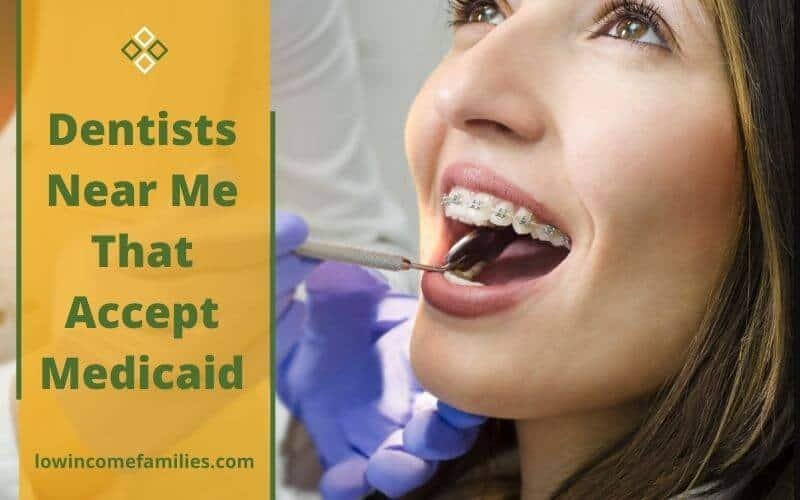
If your state employs one of these third-party systems, they may be able to offer you with a list of local dentists who can assist you refer county location rules also.
The Medicaid office in your state will help you find the right programme for you. Dental appointment services for your smile covered by Washington Apple Health can be found here (Medicaid). Find a dentist in your area who is affiliated with Apple Health.
Adult Medicaid patients are frequently accepted by low-income dental clinics, understanding that they would otherwise be unable to afford proper dental care.
Depending on where you live, the sorts of oral care you require, and other circumstances, finding a dentist nearby who accepts adult Medicaid might be a tremendous burden or a piece of cake. Patients in New York State can utilize Delta Dental’s DBM provider directory to discover a dentist in their area who accepts their Medicaid plan.
For Nursing Homes, a Mobile Dental Program The CareLink Mobile Dentistry Program offers mobile dental care to Medicaid-eligible nursing home residents. A small percentage of consumers will use the North American MCNA (Managed Care Provider Directory) to identify a dentist that accepts their Medicaid plan in their neighborhood new patients who perform various search results.
This is especially true for Medicaid patients, who must find a dentist who accepts their insurance or insure kids or new patients. Future faculty-supervised dentists frequently treat low-income patients for free so that they can hone their skills before entering private practice. Adults across the country are rare to locate a prosthodontist who will accept Medicaid for dental implants because this permanent tooth replacement option is seldom the cheapest.
Because of the complex assortment of names, finding a dentist who accepts adult Medicaid and provides special health care to new patient without member id card in your area might be tough.
Because you’ll be contacting the state rather than a middleman, finding direct Medicaid dentists in your area will require a different strategy. Because state insurance is less likely to cover their procedures, adult patients can only locate a ward periodontist who accepts Medicaid 40 percent of the time. Many states give their programmes brand names, making it harder to discover dentists who accept Medicaid in their communities.
The most straightforward way to locate a provider who accepts adult patients is to search websites or different site for children dentistry practices that accept Medicaid in your region and provide service for medicare to a patient.
Learn About The Laws In Your State
To begin, check to see if your state has expanded Medicaid eligibility to include dental coverage for adults. Medicaid expansion is sometimes included on election ballots, so you might hear about it on the news.
Because each state’s coverage varies, it’s best to call or visit your state’s Medicaid office for more information. There should be detailed information on what is and is not covered there. Also, keep in mind that only adults are subject to coverage restrictions. All states are required by the federal government to provide dental treatment to children on a healthy note.
Select Your Smile Provider From Various Search Results And A Correct Dental Plan
Once you’ve figured out which dentists accept Medicaid, you’ll want to do some research to locate the best fit for you. The list can be whittled down based on their location and offerings. If you have any questions, give them a call.
For example, it’s useful to know whether they’ll assist you in submitting treatment charges to Medicaid or if you’ll have to do it yourself. You’ll also want to locate someone who is nice and accommodating, particularly if you’ll be bringing your children to their office to qualify users for medicare therapy search note.
Benefits Comparison
Make an appointment with your dentist when you’ve decided on one. If you have a specific treatment in mind, such as a filling or a crown, let the dentist know during the exam. Request that they explain their diagnosis, planned treatment, and associated costs. Compare the cost of therapy against the Medicaid benefits.
Consider These Factors Before Selecting An Orthodontist
- Qualifications and experience of your smile providers
- The expense of treatment
- Treatment options for orthodontics
- Locations searching where emergency care is available and cleanings too
- Orthodontic consultations and follow-up and cleanings are free of charge.
Frequently Asked Questions
When compared to traditional braces, how much does Invisalign cost?
Invisalign is a type of braces that uses customized transparent aligners to correct minor chewing issues and tooth misalignment. They are usually more expensive than ordinary braces consisting of metal brackets and wires, costing between $3,500 and $8,000.
Despite being removable, these aligners must be worn throughout the day, except for eating and brushing your teeth. It may be under the access of your dental insurance plan if it is medically necessary.
Is it necessary for adults to see an orthodontist?
Absolutely. Dental care has no age restrictions, and it is important for people of all ages to maintain their oral health. Malnutrition (due to inability to bite properly), discomforts, and other disorders can all be caused by poorly aligned teeth and the x rays problems that come with the patient or child patient.
Oral and general health concerns caused by bite difficulties are no longer limited to children. Adults can be affected by them as well, causing them to be less productive at home and at work. If your dentist advises you to consult an orthodontist, you should take his or her advice seriously.
What are the most cost-effective braces?
Straightening teeth with metal braces is the most common general dentistry. For people who want to straighten their teeth, this is often the most affordable alternative. Metal braces, on the other hand, are the most visible and require special cleaning search.
Is Invisalign less expensive than traditional braces?
No, most of the time. It costs slightly more than traditional braces when you search through the proper channels (i.e., your dentist or orthodontist). However, due to the complexity of the situation, the price difference will vary from instance to case insure kids.
Braces or Invisalign: which is faster?
The answer is, in a nutshell, yes. Unlike traditional metal braces, which can take anywhere from 18 to 24 months to complete, this kind of smile providers extractions take only 12 months to complete by general dentists or depending on your dentist find. However, the length of time it takes to achieve the desired results is mostly determined by the treatment plan’s complexity.
